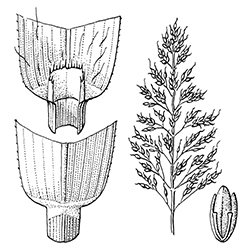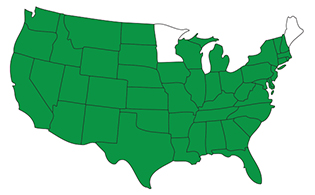

Johnsongrass
Sorghum halepense
Johnsongrass is a perennial grassy weed that is also known by its scientific name, Sorghum halepense. This problematic lawn weed is capable of growing to considerable heights and reproduces rapidly.
Identify

Rhizomes

Membranous

Rolled
Johnsongrass can be identified as a coarse, vertically growing perennial grassy weed, forming from long, thick and scaly rhizomes that are sharply pointed and more than 1/4 of an inch thick. The ligule of this lawn weed is very tall and abrupt, with jagged hairs on the top. Its blades are flat and very long, with sparse hairs near the ligule. Johnsongrass also includes a ring of hairs below the nodes at the base, and it produces a large, noticeable seed head that often has a purplish tint.
Life Cycle
This lawn weed is commonly found growing along roadsides, in pastures, in hay fields and, most frequently, among cultivated croplands. Johnsongrass thrives throughout much of North America. These perennial grassy weeds can germinate and spread from seeds, but they also produce a root structure (tubers, bulbs or corms) that can birth new weeds from your lawn's surface (using stolons) or from underground (using rhizomes). Perennial grassy weeds live two or more years and have a deeper root structure that can give rise to new weeds—even if you no longer see the weeds in your lawn.

Control
Johnsongrass is frequently a problem in cultivated crops—especially since it can reach a height of 6 feet. Its large size and rapid production of rhizomes make this grassy weed immune to most cultural weed control methods such as hand-pulling lawn weeds or proper watering and mowing. For effective weed removal, professionally selected and applied weed control treatments are your best bet for eradication.







